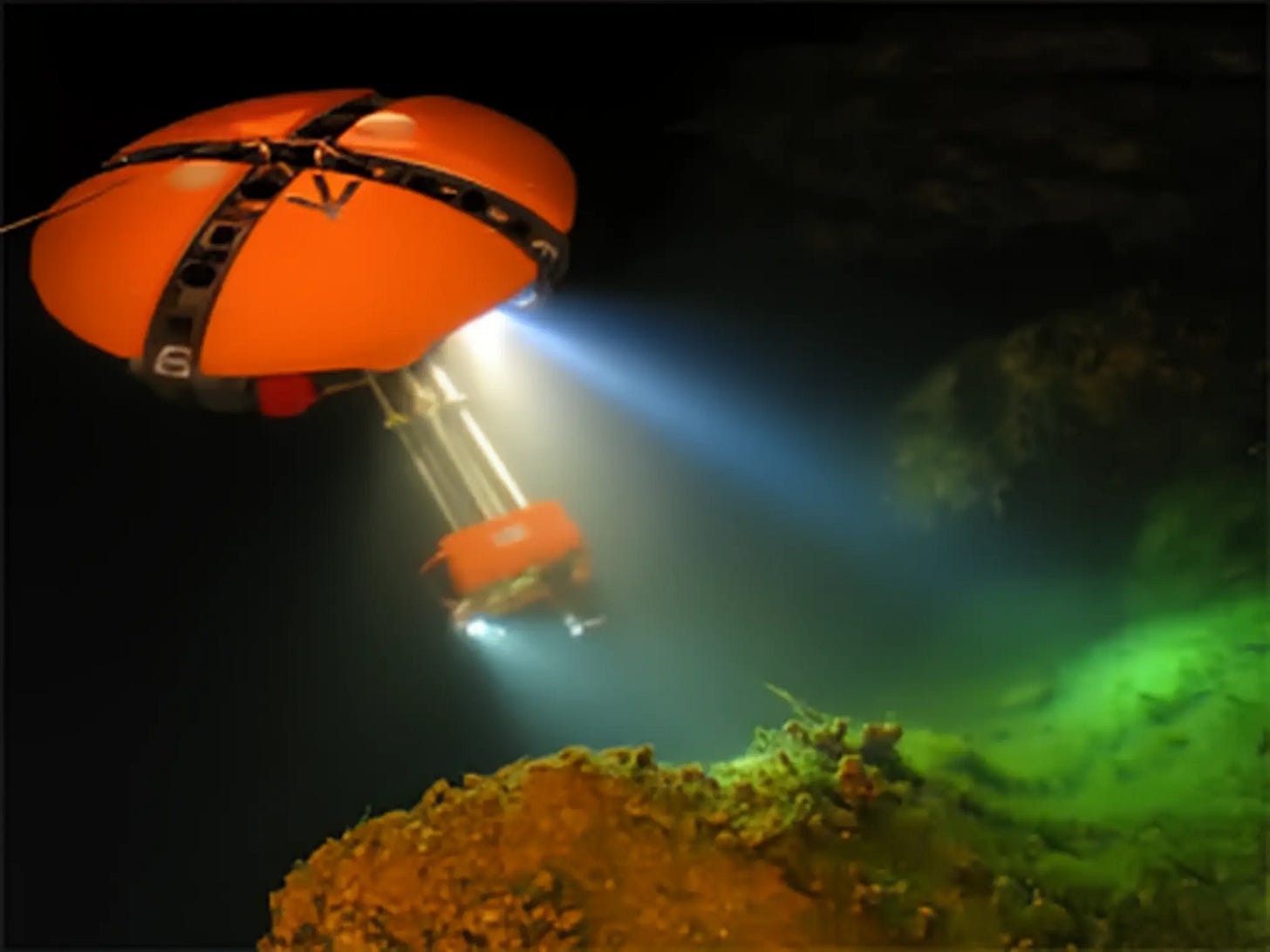The Surprising Trick That Makes Underwater Robots “Float in Place”
Secrets of underwater robots

You can’t hover in air. Not really.
Helicopters and drones have to fight gravity nonstop. Planes have to keep moving forward to stay aloft. But in water? You can just sit there. Still. Suspended. That’s the magic of neutral buoyancy, and it’s one of the things that first drew me toward underwater robots.
Here’s a simple experiment that explains it.
Take a sealed plastic or metal box. Fill it with water and drop it in a bucket. It sinks. Now empty it, seal it again, and drop it. It floats. Same box. Different outcome. That’s because the air trapped inside makes the whole box less dense than water. Submarines and underwater robots use this principle too. They carry tanks they can fill with water to sink or blow out using compressed air to rise. That compressed air does double duty—it pushes out the water, and it helps maintain pressure balance inside the system.
It’s not just engineering. It feels like science fiction made real.
Making Electronics Survive Underwater
As a kid, I wanted to build a boat. Or better yet, an underwater robot.
But I only had DC motors, and I knew enough to fear what water would do to them. So I shelved the idea. That hesitation stayed with me for years—until I discovered a few basic waterproofing tricks that suddenly made the dream feel within reach again.
The main challenge is sealing the shaft, where the spinning motor meets the outside world. If water gets in through that tiny gap, it can short the motor or corrode it. A simple solution? Apply waterproof grease. More advanced methods involve O-rings, shaft seals, or enclosing the entire motor in a watertight pod. Some designs even use magnetic coupling to transmit rotation without a physical shaft at all. For the electronics, you can use potting compounds, conformal coatings, or sealed enclosures with pressure compensation.
Now that I’ve written this down, I want to actually build one. Maybe it’s time.
How to See When Everything Is Murky
I first stumbled into this problem while doing laser experiments a few years ago.
In theory, lasers should help with underwater perception. In practice, most of the light gets scattered almost immediately. Crystal clear water is rare. Murky, sediment-filled water is the norm—and cameras just don’t work well in it.
That’s why underwater robots often use sound instead of light. Sonar, echo-location, acoustic mapping—these are not backup plans, they’re the main tools. Sound travels farther in water than light does, especially at low frequencies. That’s how dolphins communicate. Nature figured this out long before we did.
Lasers still have a role in shallow or clear waters, and in structured-light scanning. But if you’re serious about underwater vision, you need to think in waves, not pixels.
I’m now seriously tempted to build a small submarine robot.
Enjoying this kind of breakdown?
Subscribe to BuildRobotz, and I’ll keep sharing insights like these—from experiments, field work, and lessons that don’t make it into textbooks.


